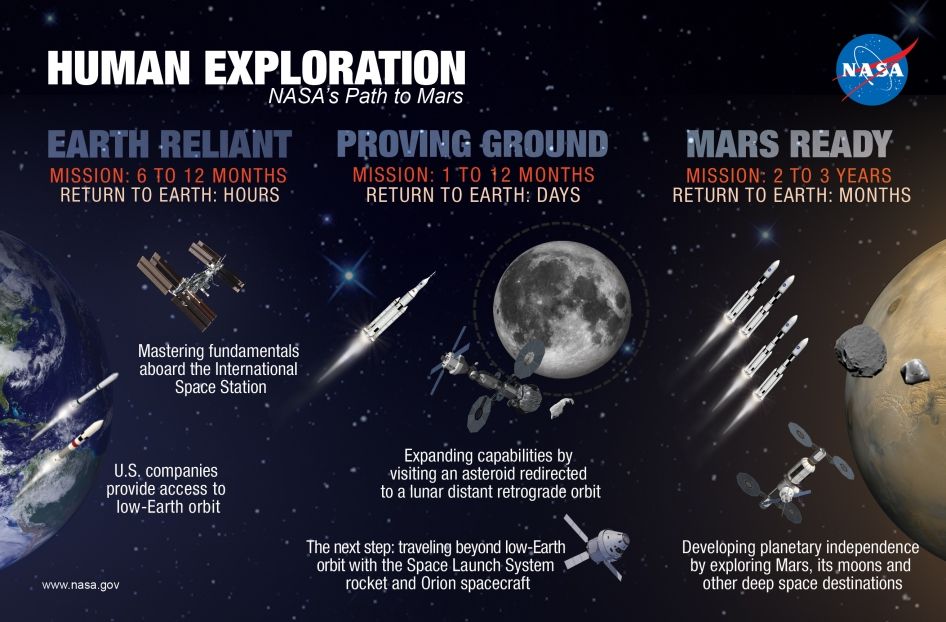NASA has outlined a plan for getting humans to Mars around 2030, and it involves lassoing a near-Earth asteroid.
Apart from outlining a plan, NASA released an infographic (above) on how exactly it plans to reach Mars in 20 years. The US space agency, while continuing research on the International Space Station, will build a new Orion crew capsule and a rocket called the Space Launch System. Astronauts will then travel to an asteroid - corralled next to the moon - in the mid-2020s. At that point, NASA will study and properly prepare for a trip to Mars and its moons in the 2030s.
"NASA will send a robotic mission to capture and redirect an asteroid to orbit the moon. Astronauts aboard the Orion spacecraft will explore the asteroid in the 2020s, returning to Earth with samples," explained NASA in a release. "This experience in human spaceflight beyond low-Earth orbit will help NASA test new systems and capabilities, such as Solar Electric Propulsion, which we’ll need to send cargo as part of human missions to Mars."
There are some members of Congress who want NASA to skip the asteroid idea and simply go to Mars (or at least the Moon, to study), as noted by NBC News. However, Charles Bolden, chief administrator at NASA, defended the space agency's 20-year plan at the 2014 Humans 2 Mars Summit at George Washington University earlier this week. He simply told critics: "Get over it, to be blunt."
READ: NASA funds 3D pizza-making food printer
A mission to Mars could look for life beyond Earth and set the groundwork for interplanetary settlement, according to Bolden. And NASA's Mars plan would only require "modest increases" in the budget. NASA's annual budget of $17.65 billion is only 0.5 per cent of the federal spending plan. For comparison purposes, Project Apollo, NASA's program responsible for landing the first humans on Earth's Moon in 1969, was about 4 per cent of the federal spending plan.
"One percent would be a gold mine," Bolden added, noting that a slight spending increase could reduce NASA's 20-year plan to perhaps 10 years. Bolden isn't holding his breath though. He said "reality is the budget" and firmly declared that a path has been chosen, but he also encouraged summit attendees to help NASA constructively "tweak" the plan.

